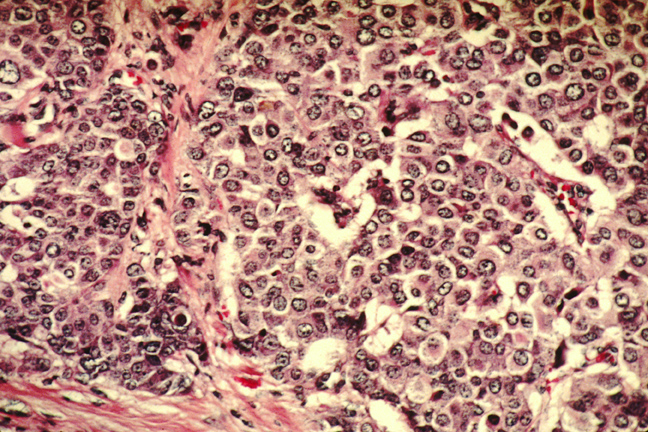
cells that have invaded
surrounding tissue.
Several ongoing Phase I clinical trials are assessing the safety and tolerability of ATM (ataxia-telangiectasia mutated) and ATR (ataxia-telangiectasia and Rad3-Related) inhibitors when administered alone or in combination with existing therapies.
ATM and ATR are attractive therapeutic targets in oncology due to defective DNA damage response (DDR) mechanisms found in many human cancers and are thought to resolve DNA damage in cancer cells and promote tumor regression.
A pharmacodynamic (PD) biomarker, which is a molecular indicator of a drug effect on a target in the body, can provide critical information about combinations of targeted agents and schedules of combination drug regimens that are important in early clinical development.
In a study published November 2 in British Journal of Cancer, CPTAC investigator (part of the Proteogenomic Translational Research Centers) Dr. Amanda Paulovich, her team, and researchers at the IMED Biotech Unit, AstraZeneca, UK used immuno-multiple-reaction monitoring mass spectrometry (iMRM-MS) to guide the selection of a clinically relevant PD biomarker for examining the ATM and ATR signaling pathway. It’s the first time iMRM-MS has been used to identify a PD biomarker for clinical deployment.
The iMRM-MS technology platform is backed by CPTAC and has several advantages over traditional protein measurement techniques such as the use of an internal standard for use across laboratories. Also, one antibody can be used to enrich multiple modifications of the same peptide with the mass spectrometer distinguishing each peptide. Combining antibodies together for peptide enrichment allows for the assay to be multiplexed.
Using the technology, the investigators applied the iMRM assay on irradiated peripheral blood mononuclear cells (PBMCs) with and without the ATM inhibitor, AZD0156. The investigators analyzed a panel of DDR-related proteins and identified phosphorylated RAD50 Double Strand Break Repair Protein (pRAD50) as an ATM-modulated biomarker. This result highlights the potential to implement iMRM-MS in a clinical setting and analyze other PD biomarkers related to ATM and ATR signaling pathways.
In addition to selecting pRAD50, the investigators also developed a pRAD50 immunohistochemistry (IHC) assay that is intended for clinical use. The pRAD50 IHC assay was validated by assessing the suppression of DNA-damage-induced ATM signaling with AZD0156 in two preclinical xenograft models.
The researchers also found that in the absence of ATM, RAD50 can be directly phosphorylated by ATR presumably as a compensatory mechanism. The difference in pharmacodynamics of pRAD50 following inhibition of ATR by AZD6738 suggests that the pRAD50 IHC assay may be a tool for assessing the function of ATM in preclinical models and patients treated with AZD6738.
These results support the clinical use of pRAD50 as a biomarker of both AZD0156 and AZD6738 pharmacology to inform Phase 2 dose/schedule.
Visit the CPTAC Antibody Portal for information regarding antibodies used in the iMRM-MS analysis.

